Sanken - Angel
Angel (1976)
 Jan 77 advert from UK importer Arrow Models.
Jan 77 advert from UK importer Arrow Models.
Japanese manufacturer introduced in late 1976. Sanken was its name with the layout following the 'norm' for pod and boom models of the era. A twin aluminium frame either side of bearing blocks holding the shafts and tail boom with the engine firmly mounted, facing upwards and a wooden construction 'pod' housing the radio gear attached to the front.
The overall look was very similar to the MM Lark with the frame layout similar to the Schlüter Heli-Baby. It had flat bottom 'lifting' section blades however, instead of having the blades rigidly mounted on the teeter plate, the whole of which moved to provide cyclic control, the head was rigidly mounted to the main shaft with each blade bolted to another mounting plate that was free to pivot up and down thus allowing each blade to 'flap' independently of each other. Though no damping was provided for this flapping action, each holder had mounting plates on the inner side that physically limited the amount the blades could flap thus preventing too much movement and reducing the possibility of a boom strike. The flybar paddles were made of plastic and had a symmetrical airfoil with weights that could be moved to change the response times and this was moved by a single rod connected to the swashplate.
The main drive consisted of an engine driven clutch driving a double set of helical gears with the primary gear incorporating an angle bevel drive for the tail rotor drive wire. This then drove the tail rotor gearing which was unusual in that it incorporated helical gears instead of the usual bevel gears. Engine cooling was achieved in two ways; first by the use of a serrated cooling shroud wrapped around the head of the engine and held in place by a clamping ring secured to the frame. Second, by the addition of a small fan located under the main gear which blew air down over the engine.
The servo's were mounted in a line at the back of the canopy and provided cyclic control through bell cranks to the swashplate, engine control direct to the carb arm and tail control through a wire and tube. At the tail the blades were controlled in a similar way to the Heli-Baby except for a unique feature in that the blades were retained by directly screwing onto the centre piece with movement achieved by the blades rotating on the threads. The ratio of tail rotor to head speed was 4:1 which was quite low and thus the tail blades were large in order to allow good control.
It was noted that it had a very slow head-speed - even slower than the Lark! This would imply a very 'soft' control but in fact it flew very well, with good handling characteristics and stability!



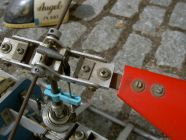
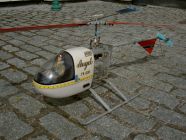

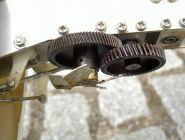
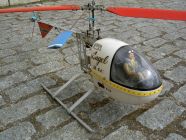

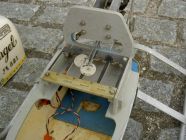
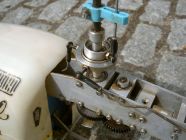

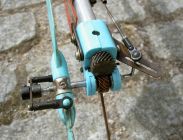
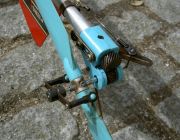
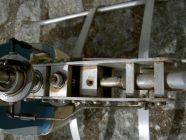

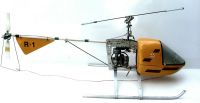
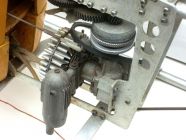
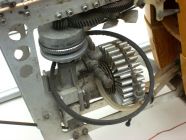



.jpeg)
.jpeg)
.jpeg)
.jpeg)
.jpeg)
.jpeg)
.jpeg)
.jpeg)
.jpeg)
.jpeg)
.jpeg)
.jpeg)
.jpeg)
.jpeg)
.jpeg)
.jpeg)
.jpeg)
.jpeg)
